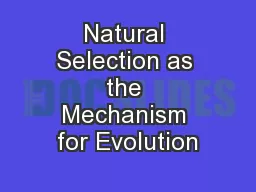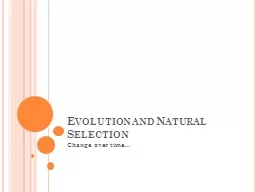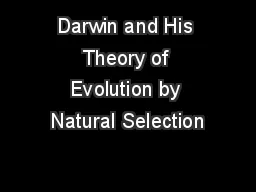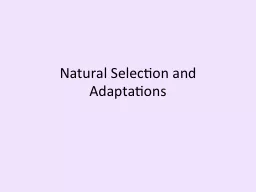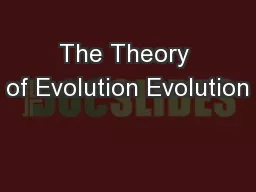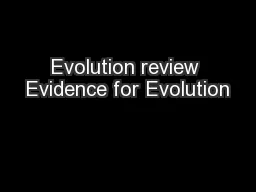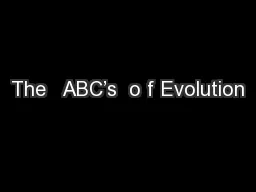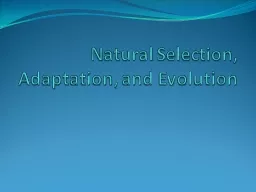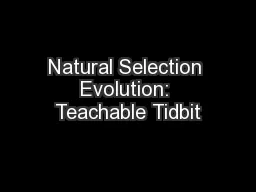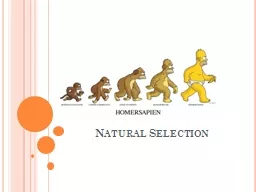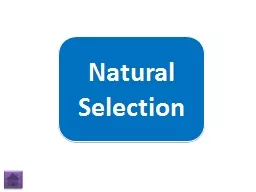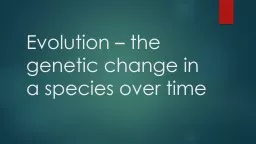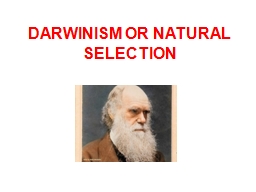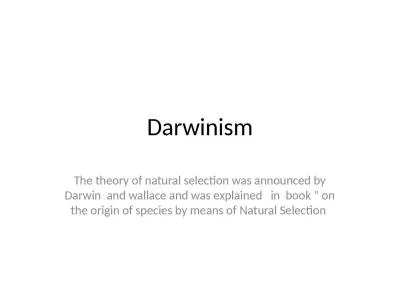PPT-Natural Selection as the Mechanism for Evolution
Author : karlyn-bohler | Published Date : 2018-10-06
3 Mechanisms for selection and an introduction to HardyWeinberg Lyells Influence In attempt to explain the past in terms of present day processes Darwin went
Presentation Embed Code
Download Presentation
Download Presentation The PPT/PDF document "Natural Selection as the Mechanism for E..." is the property of its rightful owner. Permission is granted to download and print the materials on this website for personal, non-commercial use only, and to display it on your personal computer provided you do not modify the materials and that you retain all copyright notices contained in the materials. By downloading content from our website, you accept the terms of this agreement.
Natural Selection as the Mechanism for Evolution: Transcript
Download Rules Of Document
"Natural Selection as the Mechanism for Evolution"The content belongs to its owner. You may download and print it for personal use, without modification, and keep all copyright notices. By downloading, you agree to these terms.
Related Documents

